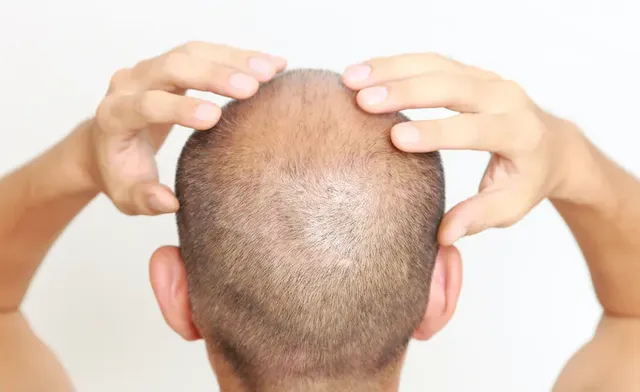
Hairline recession refers to the gradual thinning and backward movement of the hairline. This condition can begin at any age and is often influenced by genetic factors. The process typically starts with a slight thinning at the temples, leading to an M-shaped pattern over time.
Causes of Hairline Recession:
Several factors contribute to hairline recession, including hormonal changes, genetics, and lifestyle habits. The hormone dihydrotestosterone (DHT) plays a significant role in hair loss by shrinking hair follicles, making it difficult for hair to grow.
How Finasteride Works:
Mechanism of Action:
Finasteride Dubai is a widely studied oral treatment for hair loss. It functions as a 5-alpha reductase inhibitor, meaning it blocks the enzyme responsible for converting testosterone into DHT. By reducing DHT levels, finasteride helps preserve hair follicles and may encourage regrowth in areas affected by hairline recession.
Finasteride and Hair Follicle Preservation:
By limiting DHT production, finasteride prevents the miniaturization of hair follicles. This process helps maintain existing hair strands and supports the potential thickening of thinning areas. However, its effectiveness depends on the stage of hair loss at the time of treatment initiation.
Effectiveness of Finasteride for Hairline Recession:
Who Can Benefit from Finasteride?
Individuals experiencing early to moderate hairline recession may see the most benefits from finasteride. Since the treatment primarily works to prevent further hair loss, those with significant hairline recession might not experience noticeable regrowth but can still slow down additional loss.
Timeline for Results:
The effectiveness of finasteride varies from person to person. Some individuals notice changes within three to six months, while others may require up to a year for visible improvements. Patience is key, as hair growth cycles take time to respond to treatment.
Comparing Finasteride to Other Hair Loss Treatments:
Finasteride vs. Topical Treatments:
While finasteride is taken orally, topical treatments are applied directly to the scalp. The combination of both approaches may enhance overall hair preservation. However, finasteride focuses more on blocking DHT, while topical options generally work by stimulating blood circulation in the scalp.
Finasteride vs. Lifestyle Adjustments:
Lifestyle modifications such as stress management and a nutrient-rich diet can support hair health. However, these adjustments alone may not be sufficient for addressing hairline recession caused by DHT sensitivity. Finasteride provides a targeted approach by addressing the root hormonal cause of hair loss.
How to Use Finasteride for Hairline Recession:
Consistency in Usage:
To achieve optimal results, finasteride should be taken consistently. Skipping doses or discontinuing the medication may lead to a return of hair loss, as DHT levels will gradually rise again.
Understanding Hair Growth Cycles:
Hair grows in cycles, including the anagen (growth), catagen (transitional), and telogen (resting) phases. Because finasteride works by prolonging the anagen phase, it takes time before significant results become noticeable.
Monitoring Hairline Progression:
Tracking Changes Over Time:
Taking regular photos can help assess the progression of hair preservation and potential regrowth. Comparing images taken every few months allows individuals to determine whether the treatment is effective for their specific condition.
When to Seek Professional Advice:
While Finasteride UAE is a recognized treatment for hair loss, consulting a professional can help determine whether it is suitable for an individual’s unique pattern of hairline recession. Adjustments to the treatment plan may be necessary based on the response over time.
Myths and Misconceptions About Finasteride:
Can Finasteride Regrow a Completely Receded Hairline?
Finasteride is primarily a preventive treatment rather than a regrowth solution for severely receded hairlines. It may help thicken existing hair and slow further recession, but complete restoration is unlikely in advanced cases.
Does Finasteride Work Instantly?
Results take time, and noticeable improvements may require months of consistent use. Hair follicles need a sustained period to recover from DHT exposure and enter an active growth phase.
Long-Term Expectations with Finasteride:
Maintaining Results:
Continued use of finasteride is essential to maintain hair density. If the treatment is stopped, hair loss may resume over time as DHT levels return to their previous state.
Understanding Individual Variability:
Responses to finasteride vary based on genetic factors and the severity of hairline recession. While some individuals experience strong hair preservation, others may see slower or more limited effects.
Conclusion:
Finasteride is a well-researched treatment option for hairline recession, particularly for individuals in the early stages of hair loss. By inhibiting DHT, it helps maintain existing hair and may contribute to some regrowth. However, patience and consistency are necessary for evaluating its long-term effectiveness. Consulting a professional can help determine the best approach for managing hairline recession based on individual needs and goals.